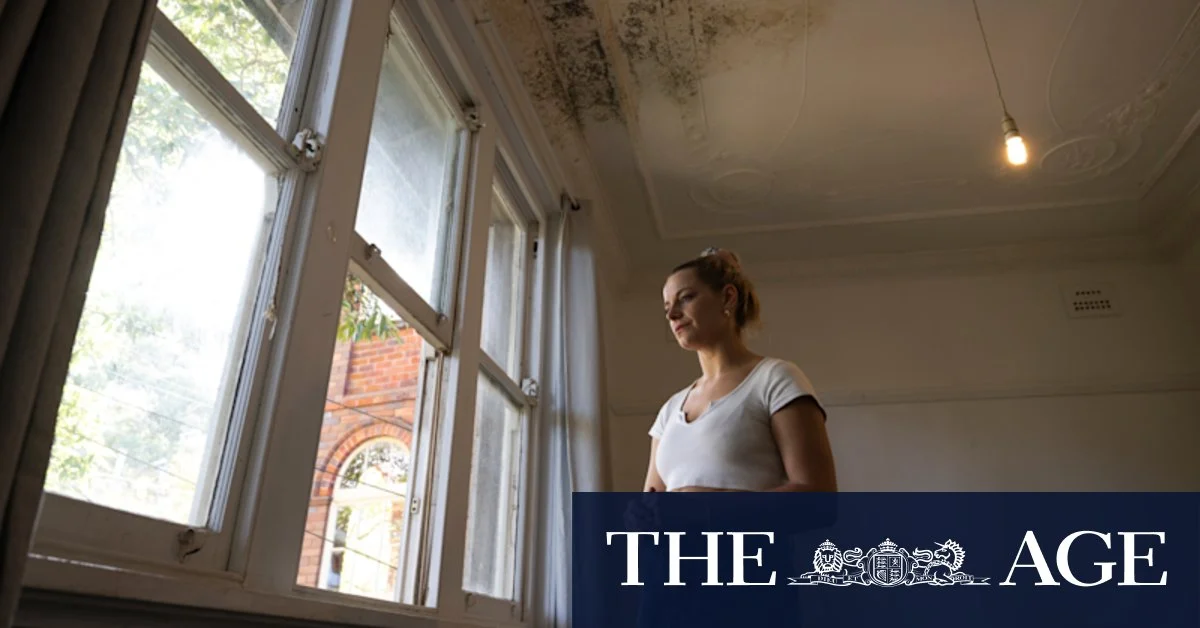“The resolution of human eyesight is about 80 micrometers, and most of the time, the aerosols of concern are much smaller,” said UTS Associate Professor Nicholas Surawski, the project’s lead.
“Indoor mould is exactly that; you can see the mould patterns on a wall, but you can’t visualise the individual spores that are causing harm.”

BioScout’s devices automatically detect fungal spores in the air to warn farmers about impending disease. They could be used to better measure airborne mould in homes.Credit: BioScout
Mould testers currently use sticky strips to trap spores and count them manually under the microscope. They also grow captured spores on agar plates to identify which species are present.
Those methods, however, are time-intensive, can miss hidden moulds and have error rates between 30 and 200 per cent, partly because they only capture small windows of time while spore concentrations can vary by a 10,000-fold difference over a single day.
The BioScout device automates spore-sampling in the air around crops by taking a snapshot through a microscope and harnessing AI to analyse whether mildew, rust, or diseases such as grape-rotting botrytis are present.

BioScout’s AI flags spores from a powdery mildew disease with green boxes.Credit: BioScout
“It could maybe take an expert 20 minutes to analyse one image,” said Dr Michelle Demers, head of science at BioScout.
“We can essentially train AI to replicate the behaviour of an expert, except that it can do 100,000 images in a quarter of a second.
“The beauty of it is we can not only tell you what you have, but we can tell you how much of it you have.”
The effort to repurpose the device into an indoor monitoring tool is backed by a grant from the NSW Chief Scientist’s office through the NSW Smart Sensing Network’s Grand Challenge Fund.
“It could really help with our understanding of exposure limits. It’s a very complex area to monitor and evaluate,” said Western Sydney University occupational hygienist Dr Margaret Davidson, another researcher on the project.
“The concealed mould is particularly nasty and hard to identify because if you can’t see it, and people are getting sick, they might be blaming other things.”

Emmeline and her husband were sick for months in a West Ryde apartment riddled with hidden mould, which grew under the floorboards and sink (pictured).Credit: Suppied
Former Sydney renter Emmeline, a nurse who did not want her last name used, said she was sick with flu-like symptoms for a year from hidden mould at a Meadowbank apartment. She moved into a West Ryde flat with her now-husband who then also became sick for months with vertigo and cyclical vomiting.
Doctors said it was probably linked to mould growing up through their floorboards. As soon as they moved out, symptoms lifted.
Loading
The World Health Organisation estimates 10 to 50 per cent of Australian homes have mould. Dr Heike Neumeister-Kemp, an international expert in the field, said mould was almost always hidden, usually within wet walls or damp crawl spaces.
She warned in a 2023 paper that mould poses a danger to those returning to homes after floods. The victims recovering from the northern NSW flood disasters are on her mind.
People often particularly fear black mould, but fragments and spores of any mould can trigger health issues, and some secrete toxins as well, Neumeister-Kemp said.
“Every single piece of fungi can have an allergenic, toxic or pathogenic pathway,” she said. “It really depends on what people are susceptible to, and any part of the fungi can potentially do harm to a human.”
Tips for preventing and removing mould
- Maintain proper ventilation: turn on exhaust fans when bathing, showering, cooking, doing laundry and drying clothes; open windows when you can.
- Reduce humidity: limit the use of humidifiers, fish tanks and indoor plants.
- Control dampness: repair water leaks, blocked gutters and burst pipes. Discard or completely clean and dry water-damaged carpets and building materials.
- Clean mouldy surfaces: use mild detergent or vinegar diluted in water solution (4 parts vinegar to 1 part water).
- For harder cleans: use diluted bleach solution (250mls of bleach in 4 litres of water). Wear protective equipment and make sure the area is well-ventilated.
- Occupational hygienists provide cleaning services and mould testing if you suspect contamination but can’t see it.
The Examine newsletter explains and analyses science with a rigorous focus on the evidence. Sign up to get it each week.


